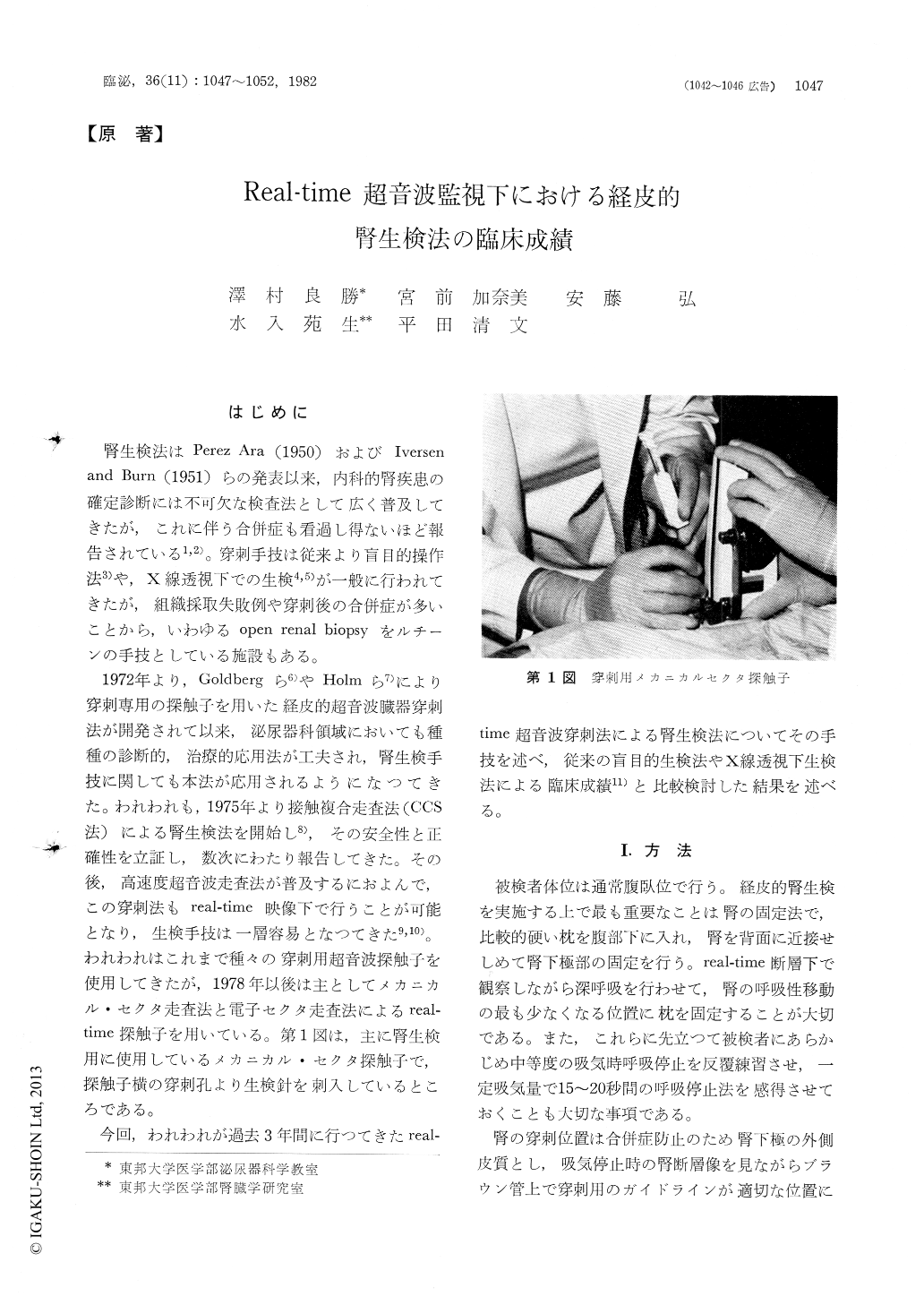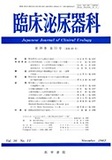Japanese
English
- 有料閲覧
- Abstract 文献概要
- 1ページ目 Look Inside
はじめに
腎生検法はPerez Ara (1950)およびIversen and Burn (1951)らの発表以来,内科的腎疾患の確定診断には不可欠な検査法として広く普及してきたが,これに伴う合併症も看過し得ないほど報告されている1,2)。穿刺手技は従来より盲目的操作法3)や,X線透視下での生検4,5)が一般に行われてきたが,組織採取失敗例や穿刺後の合併症が多いことから,いわゆるopen renal biopsyをルチーンの手技としている施設もある。
1972年より,Goldbergら6)やHolmら7)により穿刺専用の探触子を用いた経皮的超音波臓器穿刺法が開発されて以来,泌尿器科領域においても種種の診断的,治療的応用法が工夫され,腎生検手技に関しても本法が応用されるようになつてきた。われわれも,1975年より接触複合走査法(CCS法)による腎生検法を開始し8),その安全性と正確性を立証し,数次にわたり報告してきた。その後,高速度超音波走査法が普及するにおよんで,この穿刺法もreal-time映像下で行うことが可能となり,生検手技は一層容易となつてきた9,10)。
For the past 3 years 134 percutaneous renal biopsies were carried out under the real-time ultra-sonographic control in 127 cases, 4 to 67 years of age. These cases were consisted of 63 males and 64 females, with suspected renal parenchymal disease. Of them 8.7% had hypertension with the blood pressure not lower than 150/100mmHg and 11% had renal failure with the serum creatinine level not lower than 2mg/dl.
Biopsy was considered to be successful, if an obtained specimen contained 5 or more glomeruli. On the basis of the criterium 123 biopsies out of 134 were successful: the rate of successful biopsy was 92%.

Copyright © 1982, Igaku-Shoin Ltd. All rights reserved.


